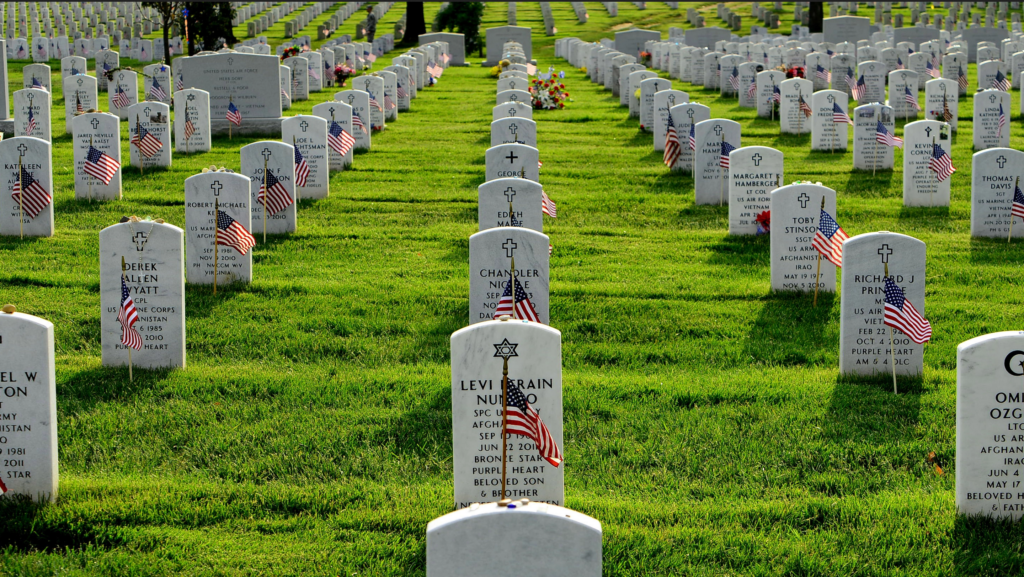A couple of weeks ago The New York Times ran a curious little think-piece by David Segal headed “Why Are There Almost No Memorials to the Flu of 1918?” That’s easy, I thought to myself when I read it. Because in 1918 they hadn’t yet learned the lesson of our post-honor culture of a century on: namely, that honor now accrues only to victims and only for being victims. In 1918 and for a long time afterwards, people were much more alive to the importance of the special status afforded to heroes who had sacrificed their lives for their country. It would be an insult to that sacrifice as well as to the country whose call they had answered to treat them merely as victims, on par with those who have died from disease or accident. Now, of course, there are not many left to resent such an insult—or even to understand why it is an insult. Therefore, erecting military-style memorials to the dead of natural causes has become a neat way for the progressive-minded to put them on a level with the brave men who gave their lives for their country while minimizing or dismissing the latter’s heroism.
They can also turn their new-style memorials to political account. The Times headline turned out to be only a rhetorical question, since Mr. Segal was really just trying to establish that the both the Spanish Flu and the new coronavirus should be treated as AIDS was after the public relations campaign of the late Larry Kramer, whose obituary appears in today’s Times—that is, as something that can be blamed upon the politically disfavored. Kramer, the obituary reminds us, spoke of “murder” and “genocide” committed by those public officials and politicians he saw as apathetic or insufficiently concerned about AIDS, and he consciously associated its dead with the six million murdered by the Nazis by calling it a Holocaust. Progressive-minded people mostly declined to be outraged by such an outrageous comparison because Kramer had also been instrumental in establishing that homosexuals were an oppressed minority whose similarity to the Jews in Nazi Germany could not be gainsaid by anyone who didn’t want to be associated with the oppressor class in this newly Manichaean world.
Mr. Segal was up to the same rhetorical tricks. No memorials to the Flu, he wrote, quoting Alfred Crosby, meant that “Americans took little notice of the pandemic . . . and then quickly forgot whatever they did notice.” This “mass amnesia,” in turn, “helps explain the lack of preparation for the COVID-19 crisis, scholars say.” And guess who gets the blame for that? Certainly not Jacinda Ardern, the prime minister of New Zealand, who last November put up a plaque commemorating those who died in the Flu pandemic a century ago and then proved to be better prepared for the new pandemic when it came along a couple of months later than almost any other world leader. Q.E.D. (Mr. Segal does acknowledge that New Zealand’s preparations were made years before Ms. Ardern unveiled her little plaque, or took office.)
Elsewhere in its pages, the Times has been running more obituaries than usual and adding the rubric “Those We Have Lost” to those of people who have died of the coronavirus—most of whom, one suspects, would not have been obituarized in the Times if they had died of anything else. Saying so sounds churlish and disrespectful to the dead and the bereaved they have left behind them, but it is also disrespectful on the media’s part to exploit their deaths for their own political purposes—and much more disrespectful to equate such deaths with those of men who were once honored for having given their lives for their country.
For now it appears that, so far as the media elite are concerned, Memorial Day is meant to be celebrated not just to remember the fallen but, perhaps even more, to honor those who have succumbed to the coronavirus, as Peter Baker of the Times seemed to be suggesting when he wrote on Memorial Day weekend of how “Trump Tweets and Golfs, but Makes No Mention of Virus’s Toll.” The Washington Post, too, issued a Memorial Day editorial tribute to the (virus) dead under a photo of a tattered American flag headed “The lives lost.”
The U.S. death toll on Monday afternoon stood at more than 97,000. Worldwide, the death toll was about 345,000; the United States, with less than 5 percent of the global population, accounts for nearly a third of all deaths. With much about the virus still unknown, a vaccine still out of reach and a faltering response from national leadership, there is no end in sight. That makes it all the more urgent to remember and honor the individuals behind the grim statistics.
Now that the number has reached 100,000, the story is top of the news in today’s Post, along with an indispensable accompaniment by Ashley Parker headed: “For a numbers-obsessed Trump, there’s one he has tried to ignore: 100,000 dead.” Here as elsewhere in the context of the Post’s long-standing efforts, which antedate the virus by far, to get rid of the allegedly “faltering” national leadership, such headlines don’t sound nearly so much like sorrow for the victims as they do like triumph over the hated President who is assumed to bear the blame for their deaths.

